Significance
Taitung Tianhau Temple is the only officially sanctioned Mazu temple in eastern Taiwan. Established in a very challenging past environment, the temple served to consolidate and unite early settlers. The many artifacts preserved in the temple, including an inscription board bestowed by the Qing dynasty’s Guangxu Emperor to commemorate the quelling of a local rebellion and stone steles that record the development of the so-called Mazu Fields in Taitung, illustrate the temple’s significance in the history of eastern Taiwan. Tianhau Temple also undertook the role of preserving Han culture under the Kominka (Japanization) movement during the Japanese colonial period. The pilgrimage of deities during the Lantern Festival in Taitung, which remains an annual event to this day, was also launched by Tianhau Temple. The temple’s large-scale twelve-year Taoist peace sacrifice, a ritual designed to preserve the peace, is another one of Taitung City’s important festive events.
History
The Qing government established Pi-lam Subprefecture in eastern Taiwan in 1875. In 1884, admiral Zhang Zhao-Lian led troops to establish an encampment at the location of today’s Zhonghua Road in Taitung to begin development of the area. However, by 1888, local indigenous tribes had begun to resist the overly stringent criteria that the Tsui-be Pacification and Settlement Bureau employed in the collection of land fees. Liu Tian-Wang, a Hakka settler in Da-jhaung Village, rose in rebellion with nearby settlers and Taiwanese plains aborigines, initiating the Da-jhaung Incident and wreaking havoc in Taitung. The mob torched the local bureau offices, where less than three hundred officers held out for seventeen days until reinforcements arrived to put down the revolt. In an expression of gratitude for Mazu’s blessings in ending the rebellion, admiral Zhang and other soldiers donated their salaries in 1889 to the building of a temple. Construction work began in the spring of the following year, and the Mazu statue of Tianhau Temple was consecrated in Tainan’s Grand Matsu Temple. When work was completed in 1891, the temple became the Qing dynasty’s only official temple in eastern Taiwan. The Tianhau Temple was originally established at the present-day location of Dong Chan Temple on Heping Street. In 1930, during the Japanese colonial period, the temple was severely damaged by a typhoon and an earthquake. It was relocated to its present-day site with funds raised by local residents. The project took three years and was finally completed in 1933. The temple later underwent multiple renovations. During the 1981 renovation, the decorated archway, the performance pavilions, and the bell and drum towers were built, giving the temple its present appearance. In 2003, the temple was designated a Taitung County cultural and historical landmark.
Special Features

1The Inscription Boards At the top of Tianhau Temple’s main hall hang two inscription boards written in praise of Mazu’s grace and blessings; one was bestowed by the Qing dynasty’s Guangxu Emperor and the other is a replica of admiral Zhang Zhao-Lian’s inscription board. After the resolution of the Da-jhaung Incident, Zhang had submitted a memorial requesting the emperor to bestow an inscription board upon Tianhau Temple during its construction. The Guangxu Emperor granted the request, and the board was duly sent on its way to Taitung City. Since there was no harbor in Taitung at that point, the ship carrying the board docked at Black Rock Bay in Chenggong Township. One story claims that the delivery was mistakenly sent to the bay because a Tianhau temple also existed there. Followers of Taitung City’s Tianhau Temple waited for a long time, but the inscription board never arrived. They therefore requested the board that hangs in the main hall be delivered. The other board, a replica of Zhang’s, was gifted by Tainan’s Grand Matsu Temple. In thanks for Mazu’s blessings in settling the rebellion, admiral Zhang presented an inscription board to Tainan’s Grand Matsu Temple, where the divine spirit of Mazu had been imparted to enable the establishment of Taitung’s Tianhau Temple. In order to strengthen mutual ties, Tainan’s Grand Matsu Temple made a replica board identical to the one it preserves and presented it to Tianhau Temple in 2010.
At the top of Tianhau Temple’s main hall hang two inscription boards written in praise of Mazu’s grace and blessings; one was bestowed by the Qing dynasty’s Guangxu Emperor and the other is a replica of admiral Zhang Zhao-Lian’s inscription board. After the resolution of the Da-jhaung Incident, Zhang had submitted a memorial requesting the emperor to bestow an inscription board upon Tianhau Temple during its construction. The Guangxu Emperor granted the request, and the board was duly sent on its way to Taitung City. Since there was no harbor in Taitung at that point, the ship carrying the board docked at Black Rock Bay in Chenggong Township. One story claims that the delivery was mistakenly sent to the bay because a Tianhau temple also existed there. Followers of Taitung City’s Tianhau Temple waited for a long time, but the inscription board never arrived. They therefore requested the board that hangs in the main hall be delivered. The other board, a replica of Zhang’s, was gifted by Tainan’s Grand Matsu Temple. In thanks for Mazu’s blessings in settling the rebellion, admiral Zhang presented an inscription board to Tainan’s Grand Matsu Temple, where the divine spirit of Mazu had been imparted to enable the establishment of Taitung’s Tianhau Temple. In order to strengthen mutual ties, Tainan’s Grand Matsu Temple made a replica board identical to the one it preserves and presented it to Tianhau Temple in 2010.
2Stone Steles of the Mazu Fields Tianhau Temple’s stone steles of the Mazu Fields are more than a century old. The Mazu Fields were set up by admiral Zhang, who assigned a portion of the fields that had been allotted to families in Chishang Township’s Dapo Village to Tianhau Temple in order to maintain a reliable source of income for the temple’s management. Tianhau Temple collected rents from the sharecropping tenants. These steles record events of the early history of Han settlement in Taitung.
Tianhau Temple’s stone steles of the Mazu Fields are more than a century old. The Mazu Fields were set up by admiral Zhang, who assigned a portion of the fields that had been allotted to families in Chishang Township’s Dapo Village to Tianhau Temple in order to maintain a reliable source of income for the temple’s management. Tianhau Temple collected rents from the sharecropping tenants. These steles record events of the early history of Han settlement in Taitung.
3The Martyr’s Shrine to the Civil and Military Officers The Martyr’s Shrine in Tianhau Temple’s right wing was originally located on the eastern shore of Posong in Pi-lam Subprefecture. It was built in 1881 by Pi-lam Subprefectural Pacification Officer Yuan Wento in memory of the pioneers who first settled in eastern Taiwan. The shrine housed several spirit tablets, which were relocated next to Tianhau Temple in 1893 due to poor maintenance of the shrine. Having gone through reconstruction and then demolishment during the Kominka (Japanization) movement of the Japanese colonial period, it was not until Tiantou Temple relocated to its current site in 1933 that the Martyr’s Shrine become incorporated into the temple for consecration. The shrine is dedicated to two Civilian and Military Officers—Qing dynasty naval officer Yuan Wento (1822 – 1884) and Admiral Zhang Zhao-Lian, who suppressed the rebellion. The two officers’ statues in the shrine are worshipped by temple followers because of their close connections to Tianhau Temple.
The Martyr’s Shrine in Tianhau Temple’s right wing was originally located on the eastern shore of Posong in Pi-lam Subprefecture. It was built in 1881 by Pi-lam Subprefectural Pacification Officer Yuan Wento in memory of the pioneers who first settled in eastern Taiwan. The shrine housed several spirit tablets, which were relocated next to Tianhau Temple in 1893 due to poor maintenance of the shrine. Having gone through reconstruction and then demolishment during the Kominka (Japanization) movement of the Japanese colonial period, it was not until Tiantou Temple relocated to its current site in 1933 that the Martyr’s Shrine become incorporated into the temple for consecration. The shrine is dedicated to two Civilian and Military Officers—Qing dynasty naval officer Yuan Wento (1822 – 1884) and Admiral Zhang Zhao-Lian, who suppressed the rebellion. The two officers’ statues in the shrine are worshipped by temple followers because of their close connections to Tianhau Temple.
4The Lantern Festival PilgrimageThe Procession of the Deities during the Lantern Festival in Taitung County can be traced back to the Japanese period. Due to poor environmental sanitation and disease pandemics, Tianhau Temple organized a pilgrimage around the area for its main Mazu statue together with Haishan Temple’s Guanyin, Fu An Temple’s Tudigong (the god of the land), Tian Guan Hall’s Guandi (the protector god), and Shun Tian Temple’s Wang Ye (a guardian against plagues and evil) to expel evil spirits and restore the fortunes of local followers. The event subsequently evolved into a major annual local religious event. It is hosted by Tianhau Temple every year, with some seventy pairs of pilgrimage troupes. In addition to traditional palanquins, spirit mediums, Black and White Impermanence, the Third Lotus Prince, the heavenly soldiers, the Eight Infernal Generals, Shi battle arrays, the five Gods of Wealth, the Song Jiang Battle Array, dragon arrays, lion arrays, Eight Immortals arrays, stilts arrays, Zhong Kui troupes, and drum arrays, there are also activities such as decorative float parades.
Reminders
Taitung’s Tianhau Temple regularly hosts folk festivals. Celebrations such as Mazu’s birthday on the 23rd day of the third lunar month, the pilgrimage of deities on the Lantern Festival, and the large-scale ceremonial festival held once every twelve years are some of the most important local events.
Panoramic
Directions